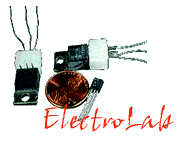






![]()
BASIC
The understanding of the amplification process requires a proper knowledge of the workings of transistors. Of the three types of transistors discussed in the Types section, we shall consider the amplifying circuit of the Bipolar Junction Transistor. While the workings of the JFET and the MOSFET entirely explain how amplification occurs through the two, it is necessary to consider the amplification circuit of a BJT to completely understand the process.
It is necessary to realize that successful amplification by means of a BJT depends upon the following 3 factors:
Now consider the following circuit, showing a BJT. The various components of the circuit are used to control the above factors appropriately. Below the functions of the various circuit components are shown:

Vi:
This is the input voltage that is to be amplified. This voltage is not steady and may be
fluctuating.
D.C. Voltage 1: This is a steady, direct voltage. Since the input voltage is fluctuating, this voltage ensures that the resultant of this and the above voltage, and hence the input current, always flow in only one direction.
Resistance 1:
This resistance may or may not be used, depending upon the need. It is used to control the
input current of the transistor.
These three components determine the current entering the transistor.
Resistance 2:
By using the current emerging from the transistor, this resistance determines the output
voltage (by Ohm's Law). The value of this resistance, and hence the output voltage, is
quite high.
D.C. Voltage 2:
This voltage is a steady, direct voltage which helps to ensure that even in the case of an
output circuit, the resultant voltage and the current always flow in one direction. This
helps in efficiently collecting the output current.
The working of the BJT now becomes clearer in light of its amplification circuit.
The amplification process in case of a JFET or MOSFET can be easily understood from its
working and hence its circuit has not been discussed here. Moreover, the circuit of either
transistor is generally quite complicated.